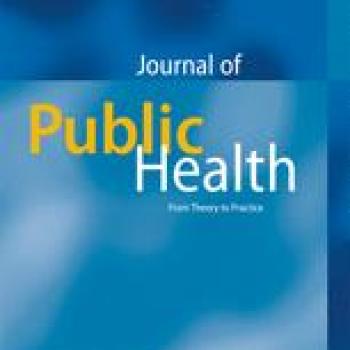Publication Information

This article published in the Journal of Public Health: From Theory to Practice 2017, 25 (6) uses Young Lives data from India to examine the association between the Haemophilus influenza type B (Hib) vaccination and child anthropometric outcomes in India.
The authors' abstract reads:
This study aims to examine the association between the Haemophilus influenza type B (Hib) vaccination and child anthropometric outcomes in India using prospective cohort data from the Young Lives Study (YLS) conducted in Andhra Pradesh, India. The participants were 1,824 children (aged 54–76 months). Stunting and underweight were used to measure the child anthropometric outcomes. The study used the multivariate logistic regression model to examine the association between Hib vaccination and childhood stunting and underweight.
The result shows that stunting was lower among children who were vaccinated against Hib as compared to those who were not vaccinated (30.8% versus 39.5%). Similarly, the prevalence of underweight was also lower among the vaccinated children than the non-vaccinated ones (39.1% versus 48.0%). The results of the multivariate logistic regression analysis also suggest that children vaccinated against Hib were significantly less likely to be stunted (AOR: 0.76, 95% CI: 0.61–0.95) and underweight (AOR: 0.79, 95% CI: 0.64–0.98) than children who were not vaccinated against Hib, after controlling potentially confounding variables.
The study concludes that vaccination against Hib, in addition to being a major intervention for reducing childhood infectious diseases and mortality, may be considered as a potential tool for reducing the burden of undernutrition in India. Therefore, the inclusion of the Hib vaccine into the Universal Immunization Programme will be helpful in reducing the burden of child malnutrition in India.

This article published in the Journal of Public Health: From Theory to Practice 2017, 25 (6) uses Young Lives data from India to examine the association between the Haemophilus influenza type B (Hib) vaccination and child anthropometric outcomes in India.
The authors' abstract reads:
This study aims to examine the association between the Haemophilus influenza type B (Hib) vaccination and child anthropometric outcomes in India using prospective cohort data from the Young Lives Study (YLS) conducted in Andhra Pradesh, India. The participants were 1,824 children (aged 54–76 months). Stunting and underweight were used to measure the child anthropometric outcomes. The study used the multivariate logistic regression model to examine the association between Hib vaccination and childhood stunting and underweight.
The result shows that stunting was lower among children who were vaccinated against Hib as compared to those who were not vaccinated (30.8% versus 39.5%). Similarly, the prevalence of underweight was also lower among the vaccinated children than the non-vaccinated ones (39.1% versus 48.0%). The results of the multivariate logistic regression analysis also suggest that children vaccinated against Hib were significantly less likely to be stunted (AOR: 0.76, 95% CI: 0.61–0.95) and underweight (AOR: 0.79, 95% CI: 0.64–0.98) than children who were not vaccinated against Hib, after controlling potentially confounding variables.
The study concludes that vaccination against Hib, in addition to being a major intervention for reducing childhood infectious diseases and mortality, may be considered as a potential tool for reducing the burden of undernutrition in India. Therefore, the inclusion of the Hib vaccine into the Universal Immunization Programme will be helpful in reducing the burden of child malnutrition in India.

